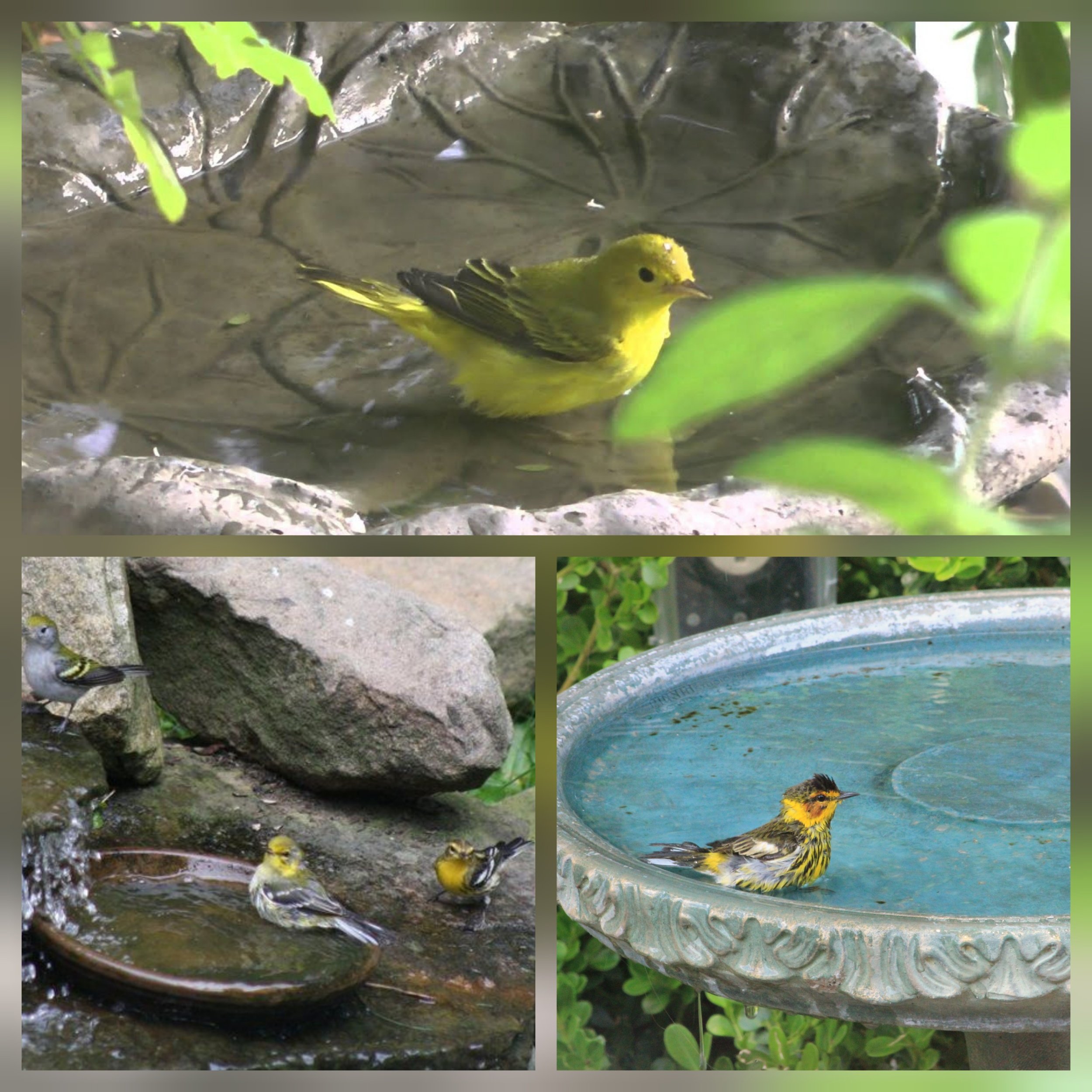Warbler Watching
Isn't that an incredible photo??
Do you wish you could see birds like that in your yard? Read on to learn about this type of bird and how to encourage its presence!
What are warblers?
Warblers are small birds that rarely grow longer than 7 inches.
Warblers are typically brightly-colored birds, but some species can be gray or brown
Warblers are known for NOT eating birdseed, so trying to attract them with it won’t work
They are America’s most common songbirds and are found in every state in the United States.
There are 52 species in the US. This is a guide to all of them. https://www.birdadvisors.com/warblers/
Why Are They Called Warblers?
Warblers get their name from the Old French word werbler. It means singing with trills and quavers. The name was first given to the Old World family of warblers around 1773.
Old World warblers are different from Passeroid warblers. The latter were named warblers mainly because they resemble the Old World warblers in terms of shape and size.
Create a Warbler-Friendly Habitat
More types of warblers show up in yards that have layered habitat: trees, shrubs, perennials. Trees, shrubs and native plants that promote healthy insect populations are the perfect way to support warblers. Don’t use pesticides in your yard. The more insects that are around (for warblers to eat), the better.
Bird baths draw warblers for a clean drink and quick dip. Use a water wiggler or a solar fountain to tempt birds while keeping mosquitoes at bay.
Place water sources in areas where you can see them regularly from inside your home, yet far enough away that the birds won't get startled by movement or fly into windows. And then make a deliberate effort to watch for them 😀
Many warblers migrate south for the winter but here's one example we may see all year round.
Yellow-rumped(Winter) warbler
It's versatile in its feeding.
Searches among twigs and leaves, and will hover while taking insects from foliage.
Often flies out to catch flying insects.
Will forage on ground, and will cling to tree trunks and branches.
Males tend to forage higher than females during the breeding season. In winter, usually forages in flocks.
It eats insects and berries.
Feeds on caterpillars, wasps, grasshoppers, gnats, aphids, beetles, and many other insects; also spiders.
Feeds in winter on berries of bayberry, juniper, wax myrtle, poison ivy, and others.
Can winter farther north than most warblers because it can digest the wax in berry coatings.
You may hear them regularly without seeing them! Listen to these calls. Play the recordings for your kids and grandkids and ask them to let you know when they hear the bird. https://youtu.be/wi4k6_0rRPI
And here are some more video clips for more motivation.
Feel free to reach out to me if you have these or want to attract them to your yard.
Happy bird watching!



